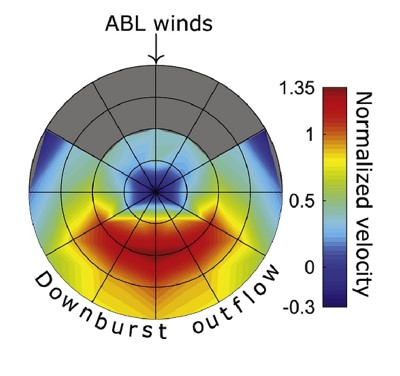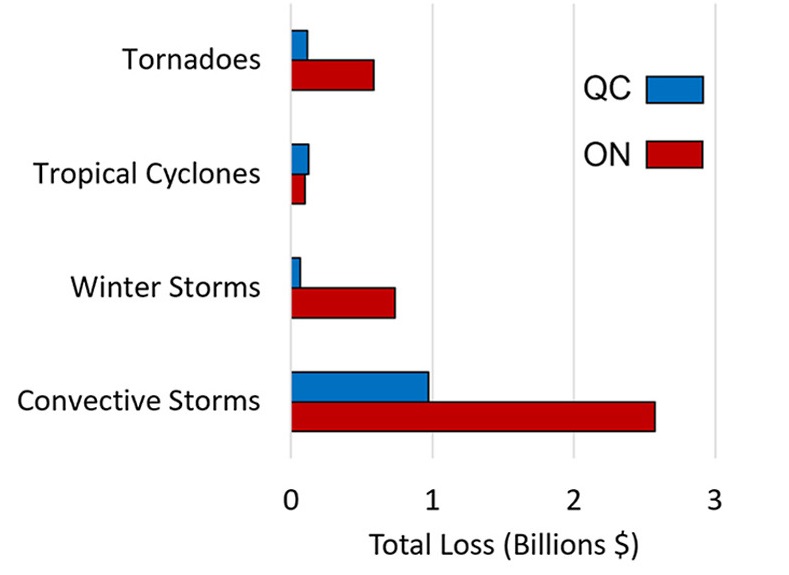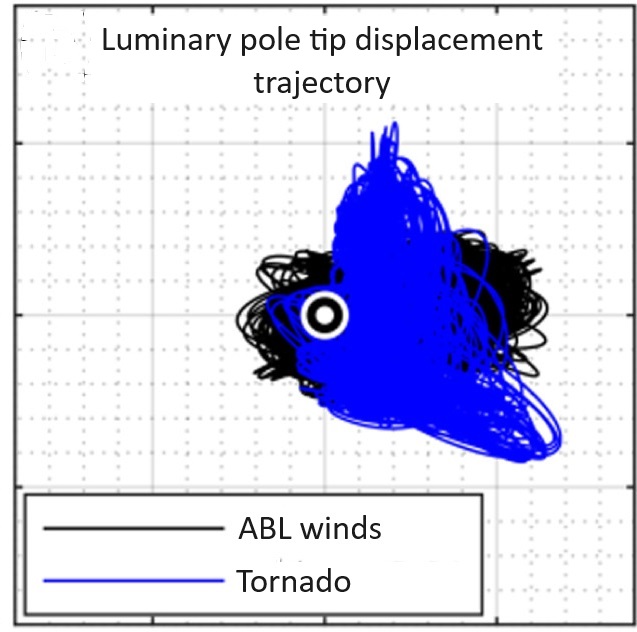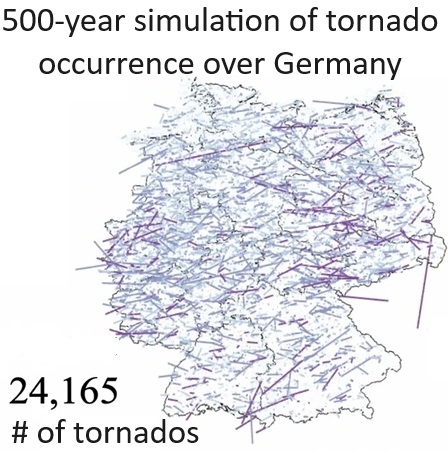Research
Globally, there are around 2000 thunderstorms in progress at any given moment.
Thunderstorms are often associated with high-impact weather, such as tornadoes, downbursts, hail, lightning, and heavy precipitation.
Severe thunderstorm winds and tornadoes cause major damage to the built environment across North America and in many other regions around the world.
My research group is interested in the formation, dynamics, and evolution of downbursts and tornadoes, as well as their impacts on the built environment.
We use field measurements, analytical methods, numerical models, and physical experiments in wind chambers
to analyze these extreme winds and their wind-structure interaction.
The application of our research is accross the fields of wind engineering, wind enrgy, and
urban sustainability and resilience.
In addition to thunderstorms, my research is also focused on the dynamics and evolution of urban boundary layers.
The urban boundary layer is an internal boundary layer that develops
when the air flows over a city. Using measurements from our vertical lidar wind profiler installed in
downtown Montreal, as well as other instruments (e.g., anemometers, radar data, ...) we study the mean profile, turbulence, and spatiotemporal evolution
of urban boundary layers. My research group also studies the dispersion
of greenhouse gases and pollution inside the urban boundary layers and lower part of the free atmosphere. Furthermore, we are
also investigating indoor concentrations of natural and antropogenic aerosols.
I am also interested in natural hazard modeling and risk assessment studies. We use Monte Carlo models to assess catastrophic losses that occur due to extreme perils
at different return periods.
Few Research Examples
Wind tunnel investigation of the interaction between near-surface atmospheric boundary layer winds and downburst outflows

|
- Unique physical experiments of a downburst outflow in ABL winds.
- Substantial difference found between downburst outflows with and without ABL winds.
- A good resemblance between physical experiments and full-scale data.
- A conceptual model of downburst outflow in ABL winds proposed.
- Vector addition of downburst outflow and ABL winds addressed.
The following figure is adapted from Romanic D and Hangan H 2020 (available here).
|
Analytical model of the interaction between atmospheric boundary layer winds and downburst outflows
|
|

|
- First analytical model of nonlinear interaction between ABL and downburst winds.
- Model validated against wind tunnel and full scale (radar) measurements.
The following figure is adapted from Moeini M and Romanic D 2023 (available here).
|
Catastrophe losses in Ontario and Quebec, Canada, caused by extreme windstorms

|
- Over 70% of all catastrophe losses in Ontario and Quebec during 2008–2021 were caused by windstorms.
- Convestive storms caused the most disastrous winds that caused over 65% of all wind losses.
- Tornadoes created the larges losses per event.
The following figure is adapted from Hadavi M et al. 2022 (available here).
|
Dynamic structural analysis of a luminary pole under tornado wind loads

|
- Wind tunnel analysis of a luminary pole model subjected to tornadic winds.
- Tip displacements of the pole were the largest in the regions characterized by strong tangential velocities.
- Several positions of the pole with respect to tornado center analyzed.
- Luminary pole responses to ABL and tornadic winds were profoundly different.
The following figure is adapted from Romanic D et al. 2023 (available here).
|
Monte Carlo modeling of tornado hazard and losses to wind turbines

|
- First vulnerability curve of wind turbine damage due to tornado winds.
- Monte Carlo model of wind turbine damage due to tornados in Germany developed.
- Doubling the number of current wind turbines results in smaller losses than installing fewer but more powerfull units (i.e., repowering).
- Probability of a tornado hitting a wind turbine calculated.
The following figure is adapted from Bouchard R and Romanic D 2023 (available here).
|




